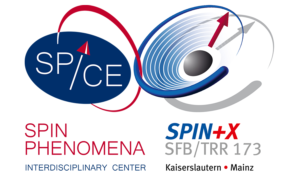
Ultrafast Antiferromagnetic Writing
While recent developments in photonics enable nearly lossless data transfer with speeds exceeding 1 Tb/s, current magnetic data storage cannot keep up with these data-flow rates nor decrease energy dissipations. Consequently, already now data centres are becoming the biggest consumers of electricity world-wide. Antiferromagnets represent a highly-promising playground for the quest for the fastest and the least-dissipative mechanism of data storage. However, in thermodynamic equilibrium, the energy of interaction of a magnetic field with the antiferromagnetic Néel vector is zero. Despite the 60-year long search for thermodynamic conjugates to the antiferromagnetic order parameter, efficient means to control antiferromagnetism are still being pursued. It is the main reason that hampers applications of antiferromagnets and further development of antiferromagnetic spintronics, magnonics and data storage, in particular.
Although many experimental and theoretical studies make us believe that ultrafast writing of bits in antiferromagnets at THz rates must be possible, such an ultrafast writing has never been demonstrated in antiferromagnetic media and the highest frequency of rewriting of magnetic bits (100 GHz) belongs to ferrimagnets. The landmark of 1 THz remains to be a monumental challenge.
The goal of the workshop is to bring together experts in ultrafast switching of antiferromagnetism, review the state-of-the-art, discuss the present challenges, define short- as well as long-term goals in the field with the ultimate goal to initiate a breakthrough towards the fastest ever and least dissipative writing of magnetic bits.


 In the time of physical distancing, it is more important than ever to remain close socially and scientifically. The Spin Phenomena Interdisciplinary Center SPICE and the Collaborative Research Center SPIN+X have joined forces to start a weekly condensed matter seminar series with an emphasis on spin and topological physics.
In the time of physical distancing, it is more important than ever to remain close socially and scientifically. The Spin Phenomena Interdisciplinary Center SPICE and the Collaborative Research Center SPIN+X have joined forces to start a weekly condensed matter seminar series with an emphasis on spin and topological physics.
